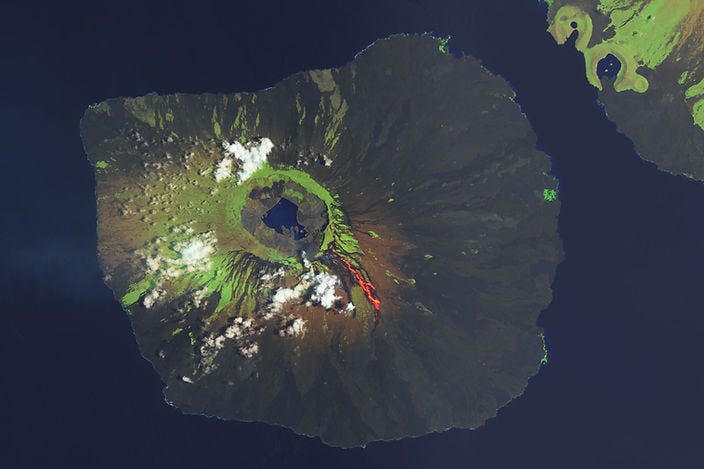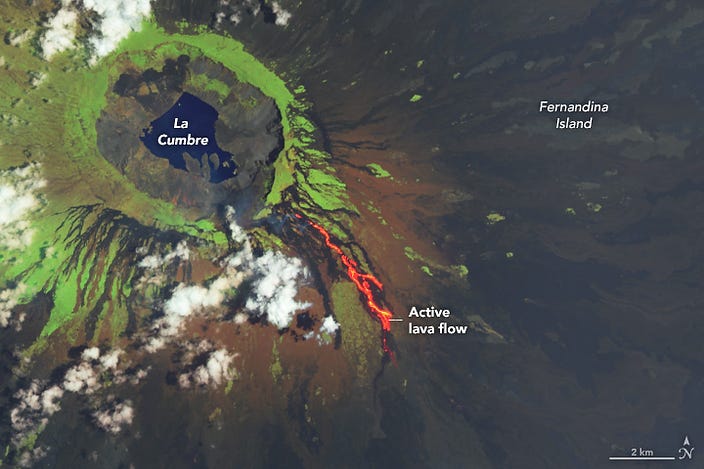Fernandina Volcano Lights Up with Lava Flow
On March 2, 2024, an eruption began on Fernandina Island—the youngest and most volcanically active of the Galápagos. Lava emerged from a fissure on La Cumbre volcano’s southeast flank, flowing across the uninhabited, wildlife-rich terrain.
The event was captured using Landsat 8 satellite imagery, which provides scientists with vital thermal and optical data. Such fanny equipment allows for:
Heat detection to track the extent and temperature of lava flow.
Surface change analysis to monitor landscape reshaping over time.
Environmental monitoring, helping scientists understand volcanic impacts on local ecosystems.
This eruption demonstrates how space-based Earth observation tools, such as Landsat, enable real-time monitoring of remote, dynamic volcanic systems, which is crucial for both planetary science and conservation.
It’s a very advanced scene to be alive in.
Read further



